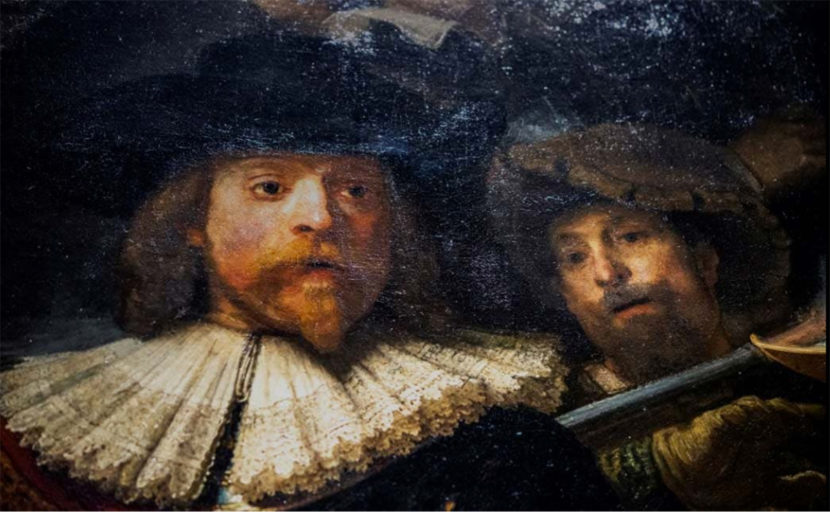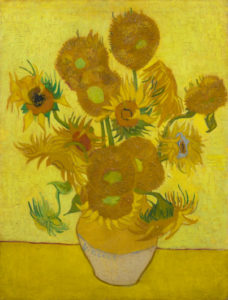More news
- Focus on the global coatings market: Global coatings market outlook
- View from the UK: Navigating chemical policy and sustainability
- Focus on adhesives: Unveiling unbreakable bonds – Testing redefines physical strengt...
- Focus on adhesives: Henkel and Covestro collaborate for sustainability of engineered wood ...
- Advances in construction chemical technology: What’s new in 2024?

Kathryn Wortley reports on the most recent innovations in museums to preserve pieces of art; from using graphene to ‘art cloning’ technology
Museum and gallery professionals have long considered light a double-edged sword — vital to effectively showcase art, yet with the potential to destroy it — but recent innovations in paints and coatings could change that view.
Determining the degree of potential light damage on a painting is challenging, according to the US-based Conservation Center for Art & Historic Artifacts, due to the impact of a wide range of factors such as light intensity and type, total time of exposure and the natural resistance of the painting’s components.
Museums Galleries Scotland, the national development body for the museum sector in Scotland, recommends illuminating very sensitive objects, including watercolours, at 50 lux (1 lux equates to 1 lumen per square metre), which is just “enough to see the shape and colour of an item”, it said in a note. Moderately sensitive items, such as oil paintings, can accept 200 lux.
But with one standard bulb emitting about 1600 lux, according to the US Department of Energy, and direct sunlight radiating about 32,000–100,000 lux1, these recommendations require measures to reduce not only visible light (400-760nm) but also the other two main parts of the light spectrum: infrared radiation (longer than 760nm) and ultraviolet (UV) radiation (shorter than 400nm).
UV radiation, which Museums Galleries Scotland says is “the most damaging form of light to museum collections,” is emitted from sunlight as well as fabricated fluorescent and traditional tungsten light bulbs.

Protect with graphene
Graphene is one substance that researchers believe has the potential to protect art while not hampering the visitor’s view of it. This carbon-based material, which is increasingly used as a paint ingredient, can absorb UV light, as well as repelling water. It adheres easily to various substrates and acts as a barrier to oxygen, gases and moisture, all while being transparent due to its thickness, which is just one atom.
A July 2021 study in peer-reviewed scientific journal Nature Nanotechnology2, by academics from Greece and Italy, noted that “exposure of artworks to UV and visible light in the presence of oxidising agents [such as lead chromate yellow dye in Vincent van Gogh’s ‘Sunflowers’ series] triggers colour changes, yellowing and fading.” Costas Galiotis, a chemical engineer at Greece’s University of Patras, and his co-authors have developed a method to transfer a thin layer of graphene to an art piece without the need for chemicals that could damage the art. They synthesised a graphene monolayer veil on copper foil via chemical vapour deposition before cleaning it with nitrogen gas to remove any molecules of water, dust or dirt. Then they attached the graphene to one side of a commercial polyester/silicon adhesive membrane with a roll-to-roll machine.
Their paper noted that the technology has the potential “to be used as a transparent layer for the protection of art objects in museums, during storage and transportation”.
Moreover, the study found the graphene layer could be removed with a soft rubber eraser without causing damage to the artwork. It also explored using a contactless graphene-based solution on picture-framing glass when the art’s rough surface or fragility prevents direct application of graphene.

Protective coatings
Meanwhile, companies have developed other protective coatings that work in similar ways.
Sherwin-Williams’ aerosol paints arm Krylon offers a UV-resistant clear coating for use on a diverse range of mediums including wood, glass and paper. The spray-on material is moisture-resistant, non-yellowing and offers “permanent finish guarding against fading” with a dry-to-handle time of only five hours, according to a company memo.
The company’s Fine Art Fixatif coating line, meanwhile, contains UV light absorbers and stabilisers, said to provide invisible protection “without dissolving pastel whites and lights” while safeguarding charcoal, pencil and chalk from “dusting, smudging and fading.”
Another practical option for galleries and museums seeking to protect paints from damage is to block the degree of light hitting the art.
At the Art Institute of Chicago, USA, which is responsible for the treatment, research and preservation of more than 30,000 works of art, its department of conservation and science said that UV-blocking film is used on all windows and light levels are monitored to ensure art is not exposed to excessive lux.
This practice is encouraged by Museums Galleries Scotland, which supports 400 facilities across the country. Spokesperson Jacob O’Sullivan pointed to the facility’s recommendation that light should be “filtered, removed, redirected and diffused,” such as by “applying solar-control (or UV-absorbing) film, which has a tinting effect,” to all windows and skylights. Further protection can be gained by using window blinds or low-UV emitting tubes, while galleries further away from the tropics should be extra careful. In Scotland, in summer, “daylight hours are much longer and could expose your items for far longer than is necessary,” said an agency memo.
But museums and gallery professionals need more than simply “anti-UV coatings” according to US-based glass and coatings provider Abrisa Technology. Its technology blocks not only UVB and UVC UV light waves, but also UVA, the most difficult light to block according to the International Ultraviolet Association – it has the longest wavelength of these UV classes. Abrisa’s UV Blocking Glass blocks “significant portions of the entire range of ultraviolet radiation,” said a company memo, which noted that it acts as a mirror for artwork.
Replicated artwork
Alongside these efforts to protect art from damage, researchers in Japan are producing carefully replicated artwork for museums worldwide, so close copies of art previously unexhibited for fear of its deterioration can be displayed.
These ‘clone cultural properties’ are a fusion of arts and technology, according to Tokyo University of the Arts’ Center of Innovation, which duplicates the contours of oil paint and materials used for the art and the frame. The patented technology, it said, has been used to create “clones” of paintings at Musée d’Orsay, France, and the US’ Museum of Fine Arts, in Boston, with these museums’ support.
This innovation, together with advances in paints and coatings, are a glimmer of hope for museum professionals determined to avoid the deterioration of the painted art in their care. PPCJ
For more information, contact: Keith Nuthall, International News Services
Tel: +44 (0)207 193 4888
Web: www.internationalnewsservices.com



